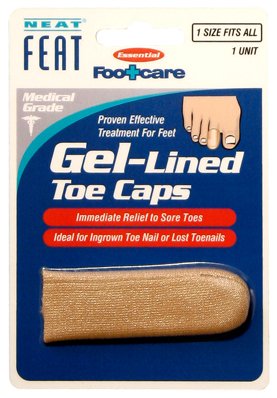heatherrnw
Member
- Time of past OR future Camino
- Past: April 2012; Future: June/July 2017
Not sure if this is the right category to put this or not, but here goes. I've been debating if I should just suck it up or put my whiny foot problems in here to get some advice or not, lol. Maybe it will help myself as well as some others 
I got new boots to start breaking in for my camino in Sept. and have been walking with them an average of 5 miles per day. On the first day I developed a blister on my left foot that sat right on that crevice between my big toe and second toe. I tended to it and rested a couple of days then started walking again. I was actually very surprised at how quickly I got a blister. I've now only walked in them 3 times and I have a blister on each foot in the same exact spot! I can't remember ever getting a blister in this exact spot before. Generally I get them on the back of my heel or maybe on the ball of my foot. So my question would have to be about the boots. I've never worn hiking boots before. My choice of footwear has always been a nice pair of cross trainers or running shoes. So could this be from the choice of shoe? Or is this a normal scenario when first starting to break in hiking boots? I got them a size larger than my normal size, so it's not like they are squeezing my feet. I'm now debating if I need to go the hiking boot route or if just using a nice pair of hiking shoes might work just fine for me; possibly even just a pair of cross trainers.
As for my blisters, I'm happy I am discovering this BEFORE I go rather than waiting and going through the pain of them when I'm there. I can choose to give my feet a rest for a couple of days and let them heal, which I don't feel I could do on the camino. I am just really surprised at how painful they are when walking. My heart goes out to all that experience this while on their journey.
Heather
I got new boots to start breaking in for my camino in Sept. and have been walking with them an average of 5 miles per day. On the first day I developed a blister on my left foot that sat right on that crevice between my big toe and second toe. I tended to it and rested a couple of days then started walking again. I was actually very surprised at how quickly I got a blister. I've now only walked in them 3 times and I have a blister on each foot in the same exact spot! I can't remember ever getting a blister in this exact spot before. Generally I get them on the back of my heel or maybe on the ball of my foot. So my question would have to be about the boots. I've never worn hiking boots before. My choice of footwear has always been a nice pair of cross trainers or running shoes. So could this be from the choice of shoe? Or is this a normal scenario when first starting to break in hiking boots? I got them a size larger than my normal size, so it's not like they are squeezing my feet. I'm now debating if I need to go the hiking boot route or if just using a nice pair of hiking shoes might work just fine for me; possibly even just a pair of cross trainers.
As for my blisters, I'm happy I am discovering this BEFORE I go rather than waiting and going through the pain of them when I'm there. I can choose to give my feet a rest for a couple of days and let them heal, which I don't feel I could do on the camino. I am just really surprised at how painful they are when walking. My heart goes out to all that experience this while on their journey.
Heather














